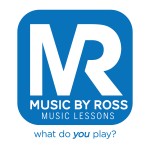Tips for Recording Drums
- The Shure SM-57 is the most popular microphone used to record snare drums, however the SM-57 mic is also considered one of the most versatile microphones for recording ALL types of instruments because of its frequency response and durability. I encourage everyone wanting to learn to record music, or TV, to start implementing this mic into their technique.
- When miking drums, be sure to mic not only the top of the drum, but also the bottom of drums – this will give you a fuller sound. This micing technique helps to capture the rattle of the snare, or the lower frequencies of toms.
- Omnidirectional microphones positioned far above the drums can create a bombastic room sound. Depending on the placement of the microphones, this can be used to capture a massive sound for the entire drum set, or for specific drums within a drum set.
Miscellaneous Recording Tips
- Always check the frequency response and the polar pattern of a microphone to find the mic that will best suit the sound source you are recording. Many microphones differ in these attributes, so be sure to check your manual or research the web for these specifications!
- A weird trick that a lot of beginner engineers don’t know – A speaker can be used as a microphone. By wiring the 2 speaker wires into an XLR connector, 6-inch or 8-inch speakers become great for capturing the frequencies of bass drums and other low frequency instruments. With basic soldering, this type of micing is easily achievable!
- Directional microphones, placed a couple feet from the upper corners of a studio room, can also give you that giant, reverberated and spacious room sound you’re looking for!
- Got too much “S” sound in your vocal tracks? A thick pen or marker taped over the transducer of a vocal microphone can reduce sibilance dramatically.
- If you haven’t decided on a final guitar tone for your mix, and you think there could be a better-fitting guitar tone out there – re-amp before you re-record the guitar track. A clean guitar recording can be played back through different amps to find the tone you are looking for. If the engineer or band has limited studio-time, and you don’t want to sacrifice that “magical take” by re-recording, re-amping is a great solution!
I hope these tips help you achieve great sound while you learn to record music!
~ Tyler Paulson (Music By Ross Instructor – Sound Engineering and Recording)




